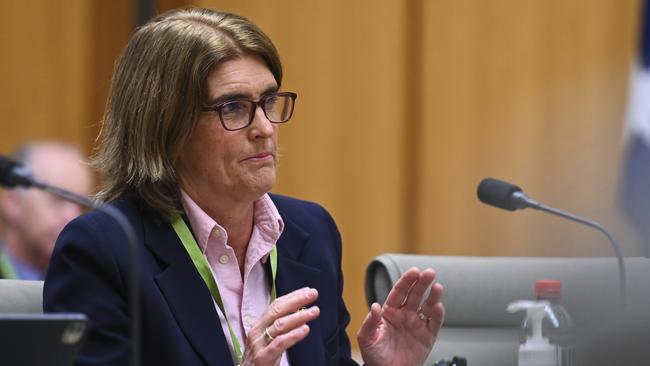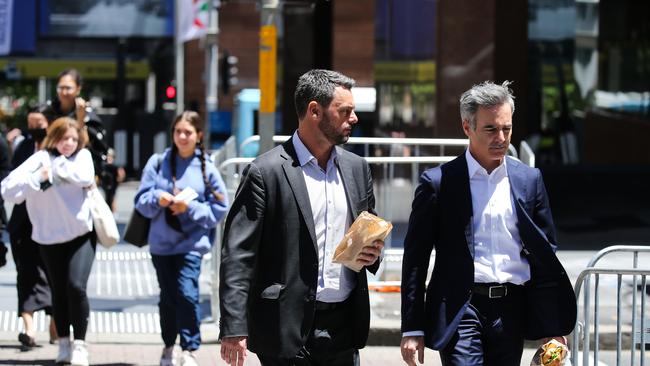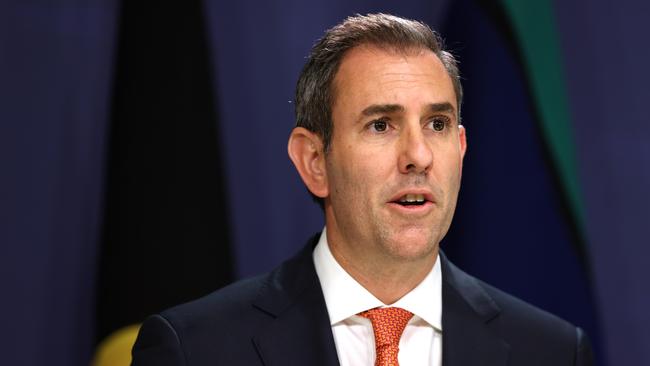Bullock delivers warning on wages growth as RBA mulls further rate rise
As the Reserve Bank mulls a 14th rate hike, freshly minted governor Michele Bullock has warned current levels of wages growth are unsustainable.
Business Breaking News
Don't miss out on the headlines from Business Breaking News. Followed categories will be added to My News.
High wages growth without an uptick in productivity could trigger further inflation, Reserve Bank governor Michele Bullock has warned, as the central bank mulls a further rate hike.
In a panel discussion at the Australian Securities and Investments Commission (ASIC) Annual Forum on Tuesday, the RBA governor cautioned inflation would remain a “crucial challenge” for the Australian economy over the next “one or two years”.
The comments come as the RBA battles to slow the economy and bring inflation back to its 2 to 3 per cent target band. Since May last year, the RBA has hiked interest rates 13 times to their current level of 4.35 per cent.
But fresh data released last week showed annual wages growth vaulted to a 14-year high of 4 per cent in September, as award wage earners and aged care workers received one-off pay rises due to decisions by the Fair Work Commission, potentially posing a fresh challenge for the RBA.

Separate monthly data released on Tuesday showed total wages and salaries rose 3.8 per cent, or $3.6bn, in the month of September to reach just shy of $100bn.
Despite the Albanese government publicly backing the growth in nominal wages, Ms Bullock said Australia’s anaemic productivity growth, a measurement of output per hours worked, had to be increased to ensure inflation continued to ease.
“We haven’t had any productivity growth in Australia for a number of years,” the governor told the ASIC Annual Forum.
“Although wage rises of around about 4 per cent in a normal context of productivity growth aren’t necessarily inconsistent with our inflation target, if we don’t have any productivity growth, they’re on the high side and they’re going to contribute to rises in costs.”
According to recent GDP figures, productivity growth has slumped to its lowest levels since May 2016.

Pushing back against the narrative that inflation was purely driven by supply side constraints, the freshly minted RBA governor stressed the central bank still had a role to tame demand driven price pressures.
“There is a bit of a perception around that the inflation at the moment really is all a supply driven thing – petrol prices, rents, these sorts of things, energy,” Ms Bullock said
“But there’s actually an underlying demand component to it and that’s what the central banks are trying to get on top of.”
Meeting minutes for RBA’s November 7 board meeting, where it hiked the cash rate by 25 basis points, echoed Ms Bullock’s concerns of domestic demand driving inflationary pressures.
“Underlying inflation had been higher than anticipated,” the board minutes read, “reflecting the persistence of broadbased domestic cost pressures in an environment of still-robust levels of aggregate demand.”
Money markets ascribe one in 20 odds that the RBA will hike rates when it next meets on December 5; however, this increases to a near 40 per cent chance by March next year. Minutes also showed that the central bank’s forecasts were based on one or two further rate hikes.
The governor also highlighted ongoing geopolitical tensions and conflicts that risked further price volatility.
“Prior to the pandemic, we were living in a world of increasingly open trade. … In a world of fragmentation and conflicts … We’re going to see more potential for supply shocks,” she said.
“Although you want to look through supply shocks, if you keep getting them there comes a point where everyone just expects inflation to remain high … If inflation expectations adjust, then that’s a problem.”

Jobs market, business agility give cause for optimism: Bullock
Quizzed earlier in the session about reasons to be “optimistic” about the Australian economy, Ms Bullock labelled business agility during the coronavirus pandemic and the resilience of the jobs market despite continued headwinds.
“Businesses demonstrated how agile they are and I was really impressed with the way they adapted,” Ms Bullock said.
“The way that we have drawn people into the workforce who weren’t there, weren’t in the workforce before … Women and youth in particular have benefited immensely from this.”
According to fresh seasonally adjusted figures released last week, the jobless rate was just 3.7 per cent in October while youth unemployment was 8.7 per cent.

Labour market softening, Chalmers says
However, Treasurer Jim Chalmers, who addressed the ASIC Forum earlier, said that while the jobs market had proven “remarkably resilient”, the “edges of the labour market” had begun to show signs of weakness.
“Higher inflation and higher interest rates is [also] having an impact on consumption and on consumer sentiment,” Dr Chalmers added.
Prices for export commodities had proven “remarkably resilient”, the Treasurer added, while the recovery witnessed in Australia’s tourism and education sectors had bolstered the economy.
Originally published as Bullock delivers warning on wages growth as RBA mulls further rate rise


